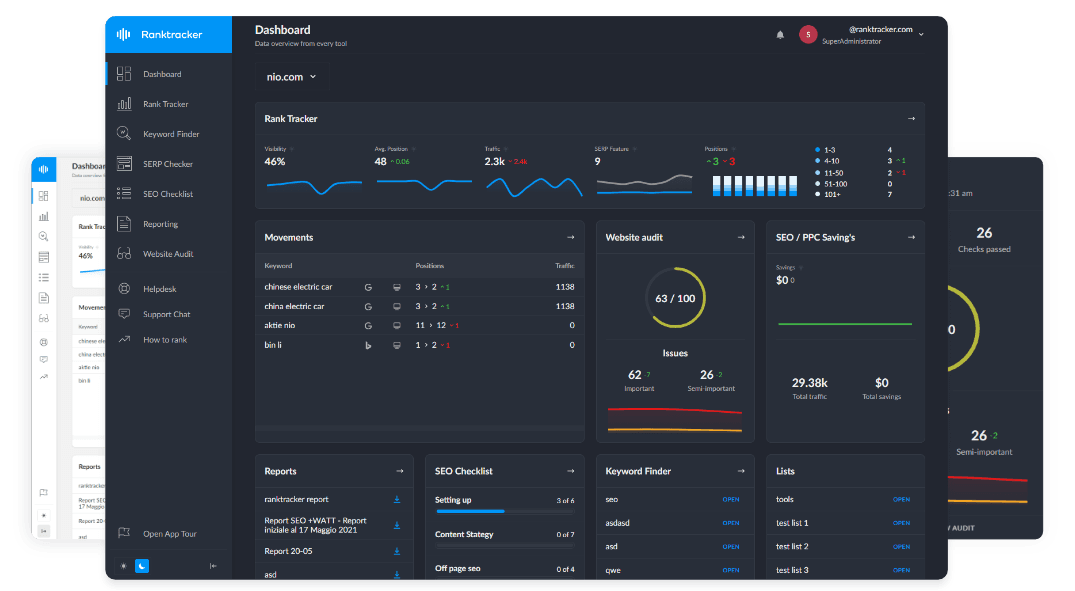Intro
Before launching a commercial web project, it’s important to determine which language versions your website should support. This decision directly affects how your product is positioned in different regions. Configuring the platform accurately based on local and language settings is essential for success.
Key Strategies for Effective Promotion and Broader Reach

- Multi-regional websites target audiences that speak the same language but live in different countries.
- Multilingual websites offer multiple language versions for users within a single region.
- A website can be both multi-regional and multilingual, which helps maximise reach and visibility.
Search engines automatically detect users’ language and location to deliver relevant results.
Why Proper Language Adaptation Matters
Correct adaptation of language versions ensures better geotargeting, improved product visibility, and fewer issues during promotion. For example, Richard Casino offers different language versions of its site so users can easily find local offers like Richard Casino no deposit bonus codes. With the right setup, businesses can avoid SEO problems and reach users more effectively.
Adapting for International Markets
International projects typically use different country-specific domains, often with multiple language versions tailored to various language groups. It’s essential to use high-quality translations — not automated tools like Google Translate.
Each version should be fluent, well-written, and appropriate in tone. Other vital aspects of international web projects include:
- Using a national domain for each version of the site
- Matching local time zones, currencies, and other location-specific data
- Providing contact information for local offices or representatives
- Implementing hreflang attributes to indicate alternate language pages
In the current version of Google Search Console, the main localisation feature is hreflang. You can inform search engines about localised content using the following line of code:
<link rel="alternate" hreflang="language-code" href="URL"/>
Place this tag within the <head> section of your webpage. Use ISO 639-1 for language codes and ISO 3166-1 Alpha-2 for region codes. For instance:
<link rel="alternate" href="https://example.com/services/" hreflang="en-au" />
This tells Google that the page content is in English and intended for users in Australia. If you're offering English content in multiple regions, you can also use en-gb, en-ca, en-ie, etc.
The All-in-One Platform for Effective SEO
Behind every successful business is a strong SEO campaign. But with countless optimization tools and techniques out there to choose from, it can be hard to know where to start. Well, fear no more, cause I've got just the thing to help. Presenting the Ranktracker all-in-one platform for effective SEO
We have finally opened registration to Ranktracker absolutely free!
Create a free accountOr Sign in using your credentials
Every alternative version of a page should include corresponding hreflang attributes. Even if the content is similar, search engines will interpret them correctly for regional and language targeting.
Serving Multiple Languages in One Country
When targeting different language groups within a single country, create separate pages for each language. For example, tourism websites in Australia may offer pages in English, Mandarin, Japanese, and more.
In this case:
- One domain is used
- Localisation parameters are configured in webmaster tools
- hreflang attributes are included
Each language version should link to the homepage and other available versions. For users whose preferred language isn’t available, set a default using x-default. This is useful for homepages with auto-redirects based on browser settings or IP:
<link rel="alternate" hreflang="x-default" href="https://example.com/"/>
Local Projects with International Reach
Some local projects may start with domestic traffic and later attract international visitors. In such cases, you might consider creating a separate landing page for each campaign.
Landing pages often feature unique content, so hreflang tags aren’t necessary. Users switch between languages using a selector while remaining on the same domain.
Why Language Versions Are Crucial for Growth
As your business grows, reaching new regions or diverse audiences becomes vital. Language versions and regional content are powerful tools for growth. When done right, this effort leads to more visitors and higher conversions.
Creating and managing multiple versions may increase costs and require more admin work, but the long-term benefits — higher visibility, traffic, and sales — make it worthwhile.
If competitors offer region- or language-specific content and you don’t, your site may rank lower. Having the right structure from the start saves time and money while boosting your success.
Quality Content from Native Speakers
The foundation of multilingual or multi-regional websites is high-quality content. Search engines prioritise well-written, relevant text.
The All-in-One Platform for Effective SEO
Behind every successful business is a strong SEO campaign. But with countless optimization tools and techniques out there to choose from, it can be hard to know where to start. Well, fear no more, cause I've got just the thing to help. Presenting the Ranktracker all-in-one platform for effective SEO
We have finally opened registration to Ranktracker absolutely free!
Create a free accountOr Sign in using your credentials
Users expect clear, native-level language that answers their questions. That’s why machine translation isn’t enough. It’s best to work with native speakers who understand tone and use keywords naturally.
Even skilled translators may struggle to match the nuance and clarity of a native writer. For less common languages like Norwegian, Finnish, or Swedish, hiring the right specialist is especially important.
Rather than managing freelancers directly, consider outsourcing to professional content agencies that specialise in localisation and native content creation.
Content Relevance Affects Rankings
Search engines analyse your entire site to build a semantic map. If your content doesn’t match the user’s intent or the page topic, people will leave — increasing your bounce rate and lowering rankings.
To avoid this:
- Hire skilled writers familiar with the target language and culture
- Focus on relevance, not just keywords
- Maintain high editorial standards across all versions
Even with excellent SEO, poor content won’t deliver results. Invest in your localisation and language adaptation strategy — your business success depends on it.
SEO optimisation of a multilingual website
At a basic level, the optimisation and promotion of a multilingual website largely follow the same principles as those for a monolingual website. Therefore, we will focus only on the differences.
Technical optimisation
If you use different domains for different languages, the search engine will determine this itself and ‘understand’ in which region the website should be ranked. This means that no specific settings are required.
However, the situation becomes more complicated when we need to promote several versions of a website in one language for different regions.
For example, promoting a website in English for the US and the UK. In this case, the hreflang attribute mentioned above is used. It helps search algorithms determine where and which language version is located. The ISO 639-1 format is used to specify the language in tags.
You can also set up regional targeting through GSC using the targeting settings.
Internal optimisation
We have already mentioned that all titles, descriptions, as well as alt and title tags for images on the website must correspond to the current language version.
The All-in-One Platform for Effective SEO
Behind every successful business is a strong SEO campaign. But with countless optimization tools and techniques out there to choose from, it can be hard to know where to start. Well, fear no more, cause I've got just the thing to help. Presenting the Ranktracker all-in-one platform for effective SEO
We have finally opened registration to Ranktracker absolutely free!
Create a free accountOr Sign in using your credentials
Technically, Google does not require this, but such oversights impair the promotion of multilingual websites – the bounce rate increases, which in turn affects rankings. Order website promotion from professionals and avoid serious mistakes!
External optimisation
There is one key difficulty in promoting a multilingual website through link building. It lies in the fact that you need to increase the link mass by using different types of links: forum, article, and so on. But the main thing is that they must be placed on sites with the same language.
That is, if you are promoting the English version of the website, then English-language resources should link to it.
Of course, you can increase the link mass to multilingual resources from external platforms with different language versions, but the effectiveness of such external optimisation will be significantly lower.
Errors and Corrections When Using Hreflang
You can check if hreflang is implemented correctly via an SEO audit. Research by Ahrefs shows that 67% of websites using hreflang have at least one issue. Common problems include:
- Missing self-reference or reciprocal links
- This prevents Google from linking language versions properly.
- Fix: Add self-referencing and bidirectional tags on each page.
- Multiple hreflang attributes pointing to the same page
- Each version should map to a unique language and region.
- Fix: Check links and remove incorrect ones.
- Incorrectly written attribute syntax
- Invalid syntax makes the tag invisible to search engines.
- Fix: Use correct ISO codes and proper formatting.
- Hreflang used on non-canonical pages
- Google may see duplicates and exclude them from search.
- Fix: Only use hreflang on canonical URLs.
- Mismatch with HTML lang attribute
- While Google ignores this, Bing may not.
- Fix: Keep both attributes consistent.
- Linking to non-functional pages
- Broken links are ignored by search engines.
- Fix: Remove hreflang attributes pointing to dead pages.
- Multiple similar pages for the same language/region
- This confuses search engines.
- Fix: Ensure each language version points to one distinct page.
- No x-default version
- Not required but helpful when no perfect match is found.
- Fix: Add x-default for homepages or global versions.
To detect and avoid most errors, scan your website regularly or use automated SEO tools like Ahrefs or Serpstat. For a full analysis, consider working with an SEO agency that can manually review key indicators.
Implementing hreflang may seem complex, especially for large international websites. If you're inexperienced, it’s worth hiring a professional. However, adding hreflang to a few pages for another language version is entirely manageable on your own.

